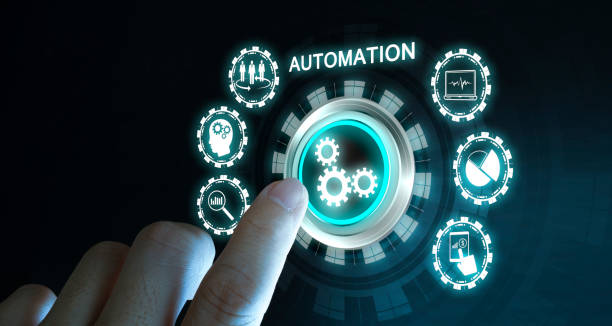
Future of Smart Everything
Automation is the use of technology to perform tasks with minimal human intervention. It’s like handing over repetitive, rule-based, or complex activities to machines, software, or systems so they can run efficiently, consistently, and often faster than humans could manage. Automation provides benefits to virtually all of industry
A automation system refers to a network of interconnected devices, appliances, and systems within a area that can be controlled and monitored remotely. The goal of a automation is to enhance the efficiency, convenience, and security through the integration of technology. Here are some key components and features commonly found in automation systems:
Smart Lighting
Lighting systems that can be controlled remotely, allowing users to adjust brightness, set schedules, or even change colors using a smartphone or voice commands.
Smart Thermostats
Devices that enable the control of heating, ventilation, and air conditioning (HVAC) systems remotely. They often include features such as temperature scheduling and learning algorithms to optimize energy usage.
Smart Security Systems
Integration of security cameras, motion sensors, door/window sensors, and smart locks to enhance security. Users can monitor remotely and receive alerts for unusual activities.
Smart Hubs
Centralized devices that connect and control various smart devices. Popular examples include Amazon Echo with Alexa, Google Home, and Apple HomeKit.
Smart Appliances
Household appliances such as refrigerators, ovens, and washing machines with connectivity features, allowing users to control and monitor them remotely.
Smart Speakers and Voice Assistants
Devices that respond to voice commands, providing hands-free control over various smart devices and systems.
Smart Entertainment Systems
Integration of audio and video systems, including smart TVs, streaming devices, and sound systems, allowing centralized control for an enhanced entertainment experience.
Smart Blinds and Curtains
Motorized window treatments that can be controlled remotely or programmed to adjust based on the time of day, temperature, or sunlight.
Smart Sensors
Various sensors, such as motion detectors, door/window sensors, and environmental sensors, that can trigger automation routines or provide information about the home environment.
Smart Cameras
Surveillance cameras with features like remote monitoring, motion detection, and two-way communication.
Smart Plugs and Outlets
Devices that can be plugged into existing outlets to make traditional devices “smart.” They enable control and monitoring of non-smart appliances.
Home Energy Management
Systems that monitor and optimize energy usage, providing insights into electricity consumption and suggesting ways to increase efficiency.

Key Types of Automation

Fixed Automation: Used in high-volume manufacturing (e.g., automotive assembly lines). Very efficient but not flexible.

Programmable Automation: Ideal for batch production. Machines can be reprogrammed for different tasks (like CNC machines).

Flexible Automation: Allows quick switching between tasks with minimal setup changes. Great for industries with frequent product changes.

Software Automation: Automates digital tasks like data entry, system monitoring, or sending invoices. Think robotic process automation (RPA) or workflow tools.
Why It Matters 🚀
Frees up humans for more strategic or creative work
From smart homes adjusting your lights automatically to AI-driven systems managing entire business operations, automation is everywhere—and it’s reshaping how we live and work.

Boosts efficiency and productivity

Reduces human error

Lowers operational costs

Automation crosses all functions within industry from installation, integration and maintenance to design, procurement and management. Automation even reaches into the marketing and sales functions of these industries.
Automation involves a very broad range of technologies including robotics and expert systems, telemetry and communications, electro-optics, cybersecurity, process measurement and control, sensors, wireless applications, systems integration, test measurement and many more.
